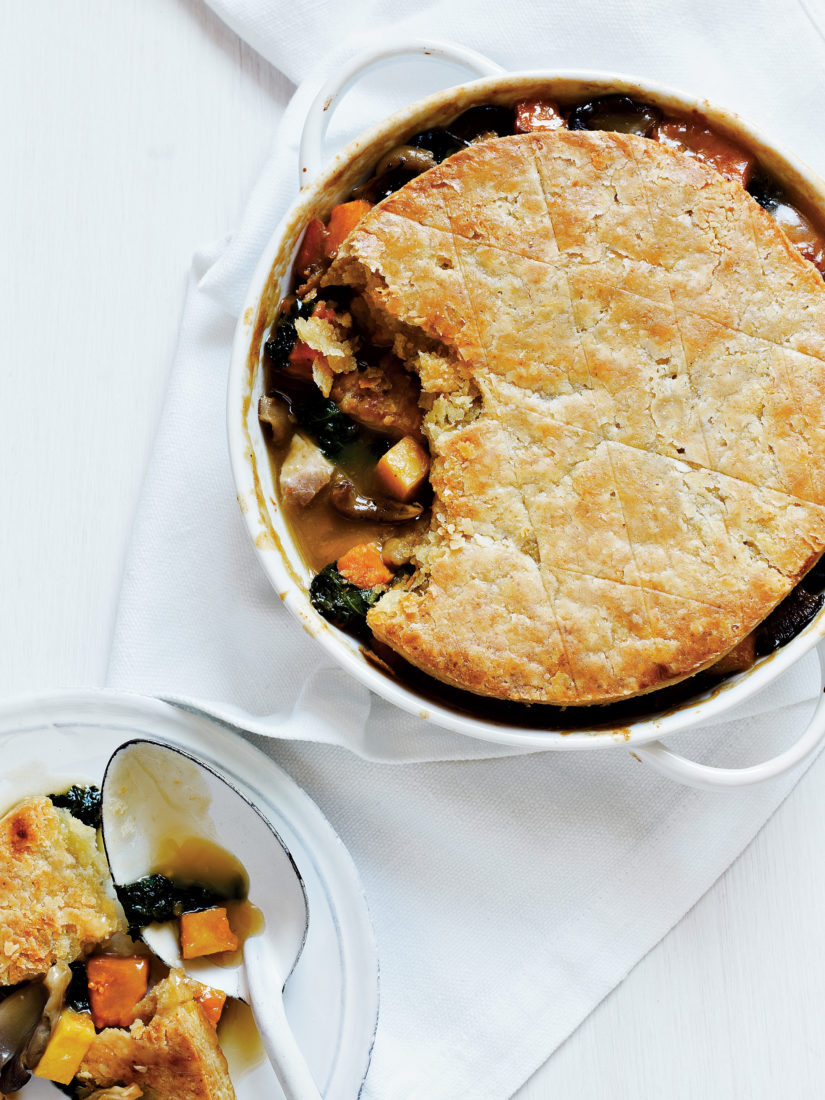Like the best home cooking, chicken potpie comes with a big helping of nostalgia. Dating back to the earliest Colonial times, the doughy casserole’s original kitchen role was one of thrift—a way to bulk up a little bit of meat into a family meal. But today potpie’s value has moved way beyond the practical. It’s a dish many of us crave when we want to conjure up the warmth of home and hearth, and chef Ashley Christensen, owner of Poole’s Diner in Raleigh, North Carolina, is no different.
“I grew up in a family that grew, cooked, and celebrated wonderful food,” she says. “My mother is from Memphis, and she’s my favorite Southern cook. This potpie is inspired by her kind of cooking: dishes that shout out to the classics, but with clean flavors and crisp textures.”
Christensen roots her recipe in the South, using local colder-month offerings of cellared sweet potatoes and rutabagas, and tender leaves of kale. Pearl onions roasted in balsamic vinegar add a tangy lift to the rich base. “This is the best kind of Southern cooking,” she says. “It makes use of flavorful but economical chicken thighs, while allowing the fruits of the season to sing.” The result is a complex woodland taste with a touch of earthy sweetness.
But the real secret is in the crust. Adding another bit of Southern flair, the chef uses a small amount of cornmeal, which provides more texture as well as a nutty, toasty flavor with an echo of sweetness to match the filling. “Though some potpies are encased in crust, I like the ‘island’ approach, letting the gravy boil up around the pillow of crust in the middle,” Christensen says. “Crust is potpie’s defining moment. It can make or break the mission, no matter how delicious the filling.”








